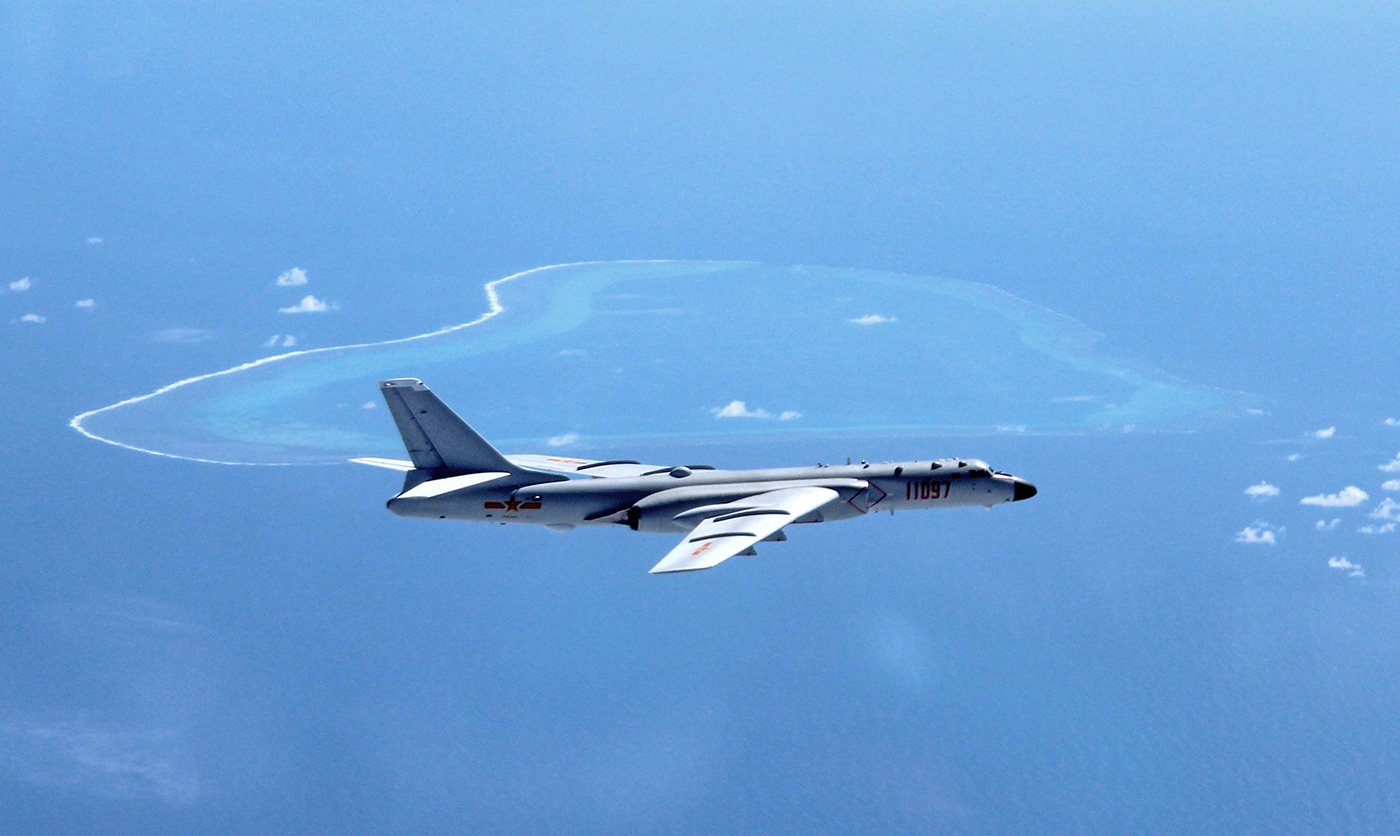For months, analysts have been watching the development of hexagon-shaped concrete structures being built on China’s island outposts in the South China Sea. Now one prominent think tank says that new satellite imagery shows these fortress-like turrets are being armed with defenses.
The Asia Maritime Transparency Initiative (AMTI) has obtained satellite imagery dated mid to late November that they says shows China’s man-made islands have been armed with close-in weapon systems and cannons. These defensive weapons have been installed on roughly 30 foot wide platforms set atop clusters of relatively complex hexagonal concrete towers. They are often built near, or as part of, a radar system. AMTI identified both deck-gun like weapons as well as close-in weapon systems (CIWS) in their reports You can check out the images and AMTI’s full report here.
Although the images aren’t clear, it appears that some sort of gun system has been installed on some of these structures, although the CIWS claims are less conclusive. Arming these turrets with both systems does make sense, since they’ve long been thought to have been some sort of weapons and sensor platforms, and their elevated position would give these types of weapons an effective line-of-sight for engaging aircraft, low-flying cruise missiles, and nearby vessels.

Exactly what type of guns and CIWS systems have been installed—and what type of fire control system and sensors they use to engage targets—remains unclear. That they exist on multiple islands and in similar configurations adds credence to the report. Deploying such a system en-masse is far more cost effective than using various systems in various configurations on multiple islands. Obviously, logistics is a key challenge for these outposts, so standardizing their defenses makes sense.
Still, these are just close-in defenses if they do in fact exist. We have yet to see evidence of surface-to-air missile systems deployed to any of China’s islands in the Spratly Archipelago, although they have popped up far to the north, on Woody Island. However, there are reports that US intelligence is tracking China’s version of the SA-21 (S-400) air defense system that looks like it is being prepared to be shipped from the southern Chinese port of Jieyang. If the system showed up on say Fiery Cross Reef, China’s largest man-made island in the Spratlys, it would be a game changer for the region’s strategic balance.

In the meantime, Vietnam has armed some of its islands in the South China Sea with heavy weaponry—which is capable of directly threatening China’s own man-made islands. The Israeli-built EXTRA rocket system, somewhat similar to the American HiMARS system, has roughly a 90-mile range and is highly accurate, using GPS and INS to arrive on target.
Being capable of carrying a 275 pound warhead or hundreds of submunitions, these rockets could crater China’s runways, especially the large ones on Fiery Cross Reef and Mischief Reef, as well as lay waste to any aircraft sitting on their dispersals. With this threat in mind, China will likely field a counter-mortar, artillery and rocket system (C-RAM) as well as eventually an advanced surface-to-air missile system capable of taking out short-range ballistic missiles. It is also worth noting that Vietnam is expanding its own islands in region, including the runway on Spratly Island.
China’s posturing in the South China Sea has only become more aggressive as the US has attempted to confront Beijing at least on some level, via freedom of navigation exercises near the islands and political overtures. Just last week, China flew H-6 heavy bombers into the region as a major play likely aimed at reminding the President elect what they are capable of.

With US-Chinese relations entering unknown territory under the new Trump administration, it is likely China will only increase its push to finish its island redoubts in the South China Sea, and arm them not just with air-defense and short-range surface defense weapons, but also long-range anti-ship missiles.
The big play for China has always been the creation of a near seamless anti-access/area-denial bubble covering their claims on the near entirety of the South China Sea. If AMTI’s analysis proves accurate, they are one major step closer to achieving that goal—and heavier weapons, such as the SA-21, are very likely to arrive soon.
Contact the author Tyler@thedrive.com
Update 12/15/16 12:45am PST: Some good action on Twitter about this story. A fellow defense writer, Mike Yeo, identified the main gun in the picture at the top of the post as likely a 76mm deck gun found on PLAN surface combatants. Looks pretty accurate. There is also the picture below showing the emplacements on Johnson South. It looks like a 76mm or similar deck gun and an AK630 CIWS. The fire control radar is seen above.
